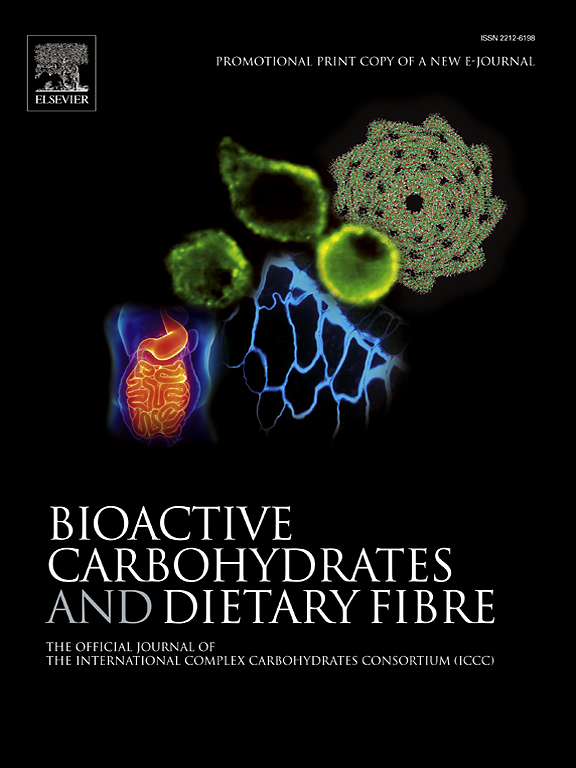Comparison of pectinase immobilized by encapsulation and entrapment and their effect on papaya juice clarification
IF 3.6
引用次数: 0
Abstract
The present work explores the immobilization of pectinase through two methods: encapsulation in calcium alginate beads and matrix entrapment in agar cubes and evaluates their effectiveness in clarifying papaya juice compared to free pectinase. An immobilization efficiency of 72.59 ± 2.41 % for 2 % sodium alginate and 91.28 ± 3.62 % for 2 % agar were found to be the best. Optimal enzymatic activity for free pectinase was obtained at 40 °C and pH 6.0, and for both immobilized pectinase at 50 °C. The optimal pH was pH 8.0 for calcium alginate bead-encapsulated pectinase and pH 4.0 for agar cube-entrapped pectinase. The kinetic parameters for free pectinase, encapsulated pectinase and entrapped pectinase were Km of 25.11 mg/mL, 16.29 mg/mL and 16.00 mg/mL and Vmax of 4.57 μmol/mL/min, 2.79 μmol/mL/min and 1.92 μmol/mL/min respectively. The encapsulated pectinase and entrapped pectinase were reused for 5 cycles with 50.55 % and 80.03 % residual activity and remained stable for 15 days. In the application for papaya juice clarification tests, agar-entrapped pectinase significantly improved optical density and reduced viscosity, achieving the best results among the tested pectinase preparations.
包封法和包封法固定化果胶酶的比较及其对木瓜果汁澄清效果的影响
本研究探讨了两种固定果胶酶的方法:海藻酸钙珠包封和琼脂块包封基质,并比较了它们与游离果胶酶在澄清木瓜汁中的效果。结果表明,2%海藻酸钠和2%琼脂的固定化效率分别为72.59±2.41%和91.28±3.62%。游离果胶酶在40°C和pH 6.0条件下酶活性最佳,固定化果胶酶在50°C条件下酶活性最佳。海藻酸钙包封果胶酶的最适pH为8.0,琼脂包封果胶酶的最适pH为4.0。游离果胶酶、包封果胶酶和包封果胶酶的动力学参数Km分别为25.11 mg/mL、16.29 mg/mL和16.00 mg/mL, Vmax分别为4.57 μmol/mL/min、2.79 μmol/mL/min和1.92 μmol/mL/min。包封的果胶酶和包封的果胶酶重复使用5个循环,剩余活性分别为50.55%和80.03%,并保持稳定15 d。应用于木瓜果汁澄清试验中,琼脂包封的果胶酶明显提高了光密度,降低了粘度,是所测果胶酶制剂中效果最好的。
本文章由计算机程序翻译,如有差异,请以英文原文为准。
求助全文
约1分钟内获得全文
求助全文
来源期刊

Bioactive Carbohydrates and Dietary Fibre
Agricultural and Biological Sciences-Food Science
CiteScore
6.00
自引率
0.00%
发文量
38
期刊介绍:
 求助内容:
求助内容: 应助结果提醒方式:
应助结果提醒方式:


